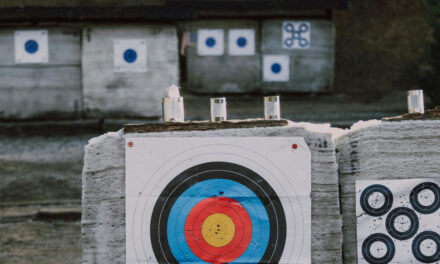Form is the foundation of success in archery. Whether you’re a beginner or a seasoned archer, mastering the fundamentals of archery technique is essential for achieving accuracy, consistency, and precision on the range. If you find yourself struggling with form, fear not—by focusing on the core principles of stance, posture, grip, draw, anchor, and release, you can refine your technique and elevate your performance to new heights. In this article, we’ll delve into the fundamental aspects of archery technique and provide tips for mastering each element.
Understanding the Importance of Form:
Form is the bedrock upon which all successful archery shots are built. Proper form ensures consistency, stability, and precision in your shooting technique, leading to improved accuracy and confidence on the range. By mastering the fundamentals of archery form, you lay the groundwork for continued growth and success in the sport.
Stance and Posture:
Begin by establishing a solid stance and posture that provides a stable foundation for shooting. Stand perpendicular to the target with your feet shoulder-width apart and your weight evenly distributed between both feet. Align your body with the shooting line, keeping your shoulders square and your back straight. Maintain a relaxed, upright posture throughout the shot sequence to minimize tension and promote consistency.
- Grip:
Next, focus on your grip—the way you hold the bow. Grip the bow handle with a relaxed, open hand, allowing the bow to rest naturally in your palm. Avoid gripping the bow too tightly, as this can lead to tension and torque during the shot. Instead, maintain a light, consistent grip pressure, ensuring that the bow remains stable and aligned throughout the shot process.
- Draw:
The draw is the process of pulling the bowstring back to full draw. Begin by extending your bow arm straight towards the target, keeping your elbow rotated slightly outward to prevent string slap. Use your back muscles to draw the bowstring smoothly and consistently, maintaining a straight line from your bow hand to your anchor point. Focus on drawing the bowstring to the same anchor point on your face with each shot, ensuring consistency and repeatability in your shooting technique.
- Anchor:
The anchor is the point at which you draw the bowstring to each time you shoot. Establish a consistent anchor point on your face, such as the corner of your mouth or the tip of your nose, and anchor the bowstring firmly against it with a relaxed, consistent pressure. A precise anchor point ensures proper alignment and consistency in your shot execution, leading to improved accuracy and precision on the range.
- Release:
The release is the moment when you let go of the bowstring to send the arrow flying towards the target. Focus on executing a smooth, controlled release with minimal movement or tension in your fingers. Avoid plucking or jerking the string, as this can cause inconsistencies in arrow flight and accuracy. Instead, relax your fingers and allow the bowstring to slip cleanly from your grasp, maintaining proper follow-through after the shot.
Practice and Patience:
Mastering the fundamentals of archery technique takes time, patience, and practice. Dedicate regular practice sessions to refining each aspect of your form, focusing on one element at a time until it becomes second nature. Seek feedback from experienced archers or coaches, and be open to making adjustments and corrections to improve your technique over time. Remember that progress is incremental, and with persistence and dedication, you can master the fundamentals and achieve your archery goals.
Conclusion: Form is the cornerstone of success in archery, providing the framework for consistent, accurate shooting technique. By mastering the fundamentals of stance, posture, grip, draw, anchor, and release, you can refine your form and elevate your performance on the range. So, if you’re struggling with form, don’t get discouraged—embrace the opportunity to hone your technique, and watch as your archery skills flourish.





